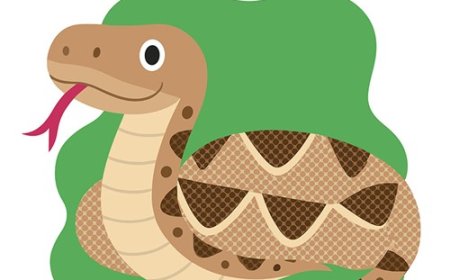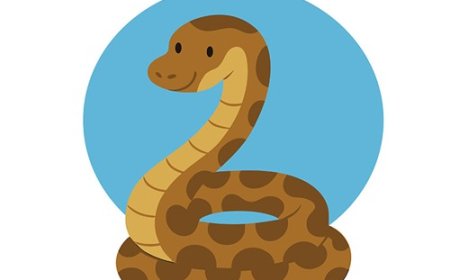Gorillas for Kids: Fascinating Facts, Habitats, and Conservation
Explore the world of gorillas with this kid-friendly guide! Learn about their diet, habitat, family life, and why protecting these gentle giants is so important.

Gorilla
Common Name: Gorilla
Scientific Name: Gorilla (includes Gorilla gorilla – Western Gorilla, and Gorilla beringei – Eastern Gorilla)
Distinctive Feature: Largest living primate, known for its muscular build, high intelligence, and close genetic relationship to humans.
Introduction
Gorillas are the largest of all primates, and they are some of our closest relatives in the animal kingdom, sharing about 98–99% of their DNA with humans. These powerful yet gentle giants live in the dense forests of central Africa. Gorillas are divided into two species—the Eastern Gorilla (Gorilla beringei) and the Western Gorilla (Gorilla gorilla)—and further into subspecies such as the Mountain Gorilla and the Western Lowland Gorilla. Despite their fearsome appearance, gorillas are mostly peaceful, plant-eating animals that live in tight-knit family groups.
Physical Description
Gorillas are easily recognized by their massive bodies, broad chests, long muscular arms, and dark fur. Here’s a detailed look at their physical characteristics:
- Size: Adult males can weigh between 300 to 500 pounds (135 to 225 kg) and stand about 5.5 to 6 feet tall (1.7 to 1.8 meters) when upright. Females are about half that size.
- Color: Their fur is typically dark brown or black. Mature males develop a silver patch of hair on their backs, which earns them the nickname “silverbacks.”
- Head and Face: Gorillas have a prominent brow ridge, large nostrils, and expressive faces that help them communicate.
- Limbs: Their arms are longer than their legs, allowing them to move using knuckle-walking.
Habitat and Distribution
Gorillas are native to the forests of central Sub-Saharan Africa. Their habitat and range depend on the species and subspecies:
- Western Gorillas live in lowland tropical forests and swamps of Cameroon, Gabon, Republic of the Congo, and Equatorial Guinea.
- Eastern Gorillas are found in the mountainous regions of Rwanda, Uganda, and the Democratic Republic of Congo.
- Mountain Gorillas inhabit high-altitude cloud forests, while Lowland Gorillas prefer dense, swampy rainforests.
Gorillas are terrestrial, spending most of their time on the ground, but they can climb trees, especially younger individuals.
Diet and Behavior
Gorillas are herbivores, and their diet is made up mostly of:
- Leaves
- Fruits
- Stems
- Bark
- Roots
- Occasionally insects like ants and termites
Gorillas do not hunt other animals. They spend a large portion of their day foraging and eating. An adult male can consume up to 40 pounds (18 kg) of vegetation each day.
Their strong jaws and teeth help them chew tough plant material. They use their intelligence and dexterity to strip leaves, peel fruit, and dig for roots.
Reproduction and Lifecycle
Gorillas have a slow reproductive rate, which makes them vulnerable to population decline.
- Mating: Silverback males lead the group and usually have exclusive breeding rights. Females give birth every 4 to 6 years.
- Gestation Period: About 8.5 months.
- Birth: Usually one baby is born, weighing around 4.5 pounds (2 kg).
- Childcare: Mothers care for their young by nursing, carrying, and teaching them.
- Maturity: Young gorillas become independent around age 3–4, with males reaching maturity at 12–15 years.
- Lifespan: Wild gorillas live about 35–40 years, but can reach 50+ years in captivity.
Behavior and Social Structure
Gorillas live in groups called troops or bands, led by a dominant silverback.
- Group Size: Typically 5–30 individuals.
- Social Bonds: Strong relationships, especially between mothers and young. Grooming and play strengthen bonds.
- Communication: Gorillas use sounds, gestures, facial expressions, and body postures.
- Tool Use: They use sticks to measure water depth and leaves as sponges.
- Daily Activities: Foraging, resting, and building leaf nests to sleep in.
Conservation Status
Gorillas are among the most endangered animals in the world.
- Mountain Gorillas: Endangered
- Eastern Lowland Gorillas: Critically Endangered
- Western Lowland Gorillas: Critically Endangered
- Cross River Gorillas: Critically Endangered
Major Threats:
- Habitat Destruction: Logging, mining, and agriculture.
- Poaching: Illegal hunting for bushmeat.
- Diseases: Especially Ebola.
- Human Conflict: War and political instability.
Conservation efforts include protected reserves, anti-poaching patrols, education, and eco-tourism.
Cultural Significance
Gorillas hold an important place in African folklore and global culture.
- In African myths, they are seen as forest spirits.
- Globally, they appear in films like King Kong and Gorillas in the Mist.
- Dian Fossey made gorillas symbols of wildlife protection.
Interesting Facts
- Close to Humans: Share nearly 99% of our DNA and can learn sign language.
- Gorilla Laughs: They laugh when tickled.
- Koko the Gorilla: Learned over 1,000 signs.
- Gentle Giants: Shy and peaceful.
- Nest Builders: Make new nests every night.
🧠 Vocabulary Words
| Word | Definition |
|---|---|
| Silverback | A mature male gorilla with a silver-colored back hair who leads the group. |
| Herbivore | An animal that eats only plants. |
| Troop | A group or family of gorillas living together. |
| Knuckle-walking | A way gorillas walk using their knuckles to support their weight. |
| Gestation | The time when a baby grows inside the mother before birth. |
| Endangered | At risk of disappearing forever. |
| Conservation | Protecting animals and nature. |
| Foraging | Searching for food. |
| Primates | A group of mammals that includes apes, monkeys, and humans. |
| Habitat | The natural place where an animal lives. |
References & Further Reading
- Dian Fossey Gorilla Fund International – https://gorillafund.org
- World Wildlife Fund (WWF) – https://www.worldwildlife.org
- IUCN Red List – International conservation status of gorillas.
- National Geographic Kids – kids.nationalgeographic.com
- BBC Earth – Documentaries on gorilla behavior.
- Goodall, J. – Through a Window (comparison with chimpanzees).



















































